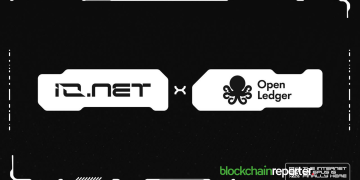For those of you who are new in crypto, you will have heard of Bitcoin Cash and Ethereum Classic, probably the two most known coins referred to as ‘forks’ – but there are many others, and if you stay with us you will no doubt see more in the future.
The Basics – Soft Forks and Hard Forks
Forking is the process of changing the protocol of a cryptocurrency to the point where the nodes and miners that make it work cannot continue to support the coin without following new rules. This sounds like it should be happening all the time – and indeed it does.
A Soft Fork is a change in the protocol where the entire community (or near enough) supports the move, but where some or all blocks that were minted before the forks could not have been submitted after the fork.
For example, if the block size of a coin before a Fork is 800kb, and this is changed to 1mb with the fork, the old blocks in that chain will remain at 800kb, but if you tried to submit a new block after the fork that was 800kb it would be rejected by all other nodes, since everyone but you now agrees that blocks should be 1mb.
Which brings us to Hard Forks. If the changes to the protocol are significant enough, or controversial in the community, the result can be a situation where some leap the new chain while others stick with the unedited protocol. When this happens, we end up with two distinct chains sharing past transactions but not future ones.
The most famous of these forks is likely the split of Bitcoin on August 1, 2017, into Bitcoin (BTC) and Bitcoin Cash (BCH). Both projects thought of themselves as the proper heir to Satoshi Nakamoto’s vision for decentralized online currency.
The economic majority of the community came down on the side of BTC, making it by most standards the ‘legitimate’ Bitcoin, but with many uncontroversial soft forks in the past creating a situation where the original Bitcoin code from 2008 is no longer in use, it is worth keeping in mind that there was no objective answer here. At the time of the fork, the economic majority could have decided to swing either way.
BCH Fork Controversies
Even a year later, however, the with the dust settled and nearly universal consensus as to which chain is the main one, Bitcoin Cash retains a large community of supporters and a substantial market cap in the top 10. This makes BCH one of the most successful and well known of the forked currencies. It is also an example of a sustained chain split. A sustained chain split is a subset of forks where both chains remain alive.
Much more common, and less critical perhaps to the average user, are short-lived chain splits that occur all the time. Often these are not even intentionally created. It can be as simple as two miners submitting a block at near the same time. As the two versions of the block propagate through the network, they spread to new nodes until, inevitably, they hit upon nodes that have already accepted the other version of the block.
This happens all the time and is perfectly normal, but it does not change the fact that we now have a split chain. In the normal course of events, this is resolved as more blocks are added by miners – nodes simply overwrite the last few blocks with the new version if they encounter nodes with longer chains.
Miners have an economic incentive to push the version of a chain where they were the ones to mint a block – as they receive the mining rewards only in that version of the chain, but if the rival chain has propagated through the network to the point where the miner cannot participate in the mining of future blocks, they have no choice but to abandon the version they were on.
This splitting of chains, by the way, is why you have to wait a while for exchanges to credit your deposits. They want to be certain that the chain where you sent them your coins is the version of the chain used by everybody.
Otherwise, they might end up having credited your account with coins that they never got as far as the consensus is concerned. And different currencies have different amounts of time you have to wait before you can be certain your transaction has been confirmed on the chain.
Notable Forks
We have talked about Bitcoin Cash. Other notable forks include Litecoin, which forked off of Bitcoin in 2011, and Ethereum Classic, which has been in the news lately as it began trading on Coinbase. Unlike BCH, Litecoin was not a chain split off of Bitcoin. Bitcoin holders were not credited with an equal number of coins on the new chain, nor was any of Bitcoin’s transaction history kept.
Nevertheless, Litecoin’s codebase is nearly identical to that of Bitcoin, and Litecoin adopted Segwit and the Lightning Network before Bitcoin, earning Litecoin the nickname of Bitcoin’s ‘little brother’ or test net.
Unlike the other coins mentioned in this article, it was never the purpose of Litecoin to supplant the original coin – Litecoin has been happy to coexist with Bitcoin for going on seven years. As a result, there is very little tension between the Bitcoin and Litecoin communities.
Ethereum Classic is a good example of something else. The fork that led to its creation had almost universal support within the Ethereum Community – though the purpose of that fork was to eliminate it. Ethereum was forked to reverse a theft in June 2016 of some 50 million US dollars from DAO – a smart contract built on top of the Ethereum chain for the development of decentralized apps, and a very ambitious project.
ZClassic to ANON Fork
An upcoming fork of ZClassic has spurred up the cryptocurrency community, especially after the debacle of Bitcoin Private, a rather controversial fork project.
Announced in April 2018, ANON is a fork of Bitcoin and ZClassic and aims towards widespread adoption, inclusion, and a transparent forking process.
As stated in their white paper, the project is primed to solve long-standing Bitcoin issues: Slow transactions speeds, high fees, miner-centralized networks, and lack of privacy.
In this regard, ANON takes the robust protocol features of bitcoin, fuses it with the privacy features of Zclassic, adopts MIT created zk-SNARKs privacy technology and allows master node support with a 500 ANONs.
As per the website, people participating in the team’s vision receive ANON in a 2:1 ratio on September 10, 2018. This can be done with holding either of Zclassic or Bitcoin respectively.
Furthermore, exchange support would be revealed long before the actual fork, thus informing the community much in advance about where to except the currency after being created.
To summarize, ANON is an ASIC resistant ZCL-BTC hard fork that boasts of pre-snapshot exchange support, transparent project commitment, and privacy security features.























